How to make a batch of unique shoes in China
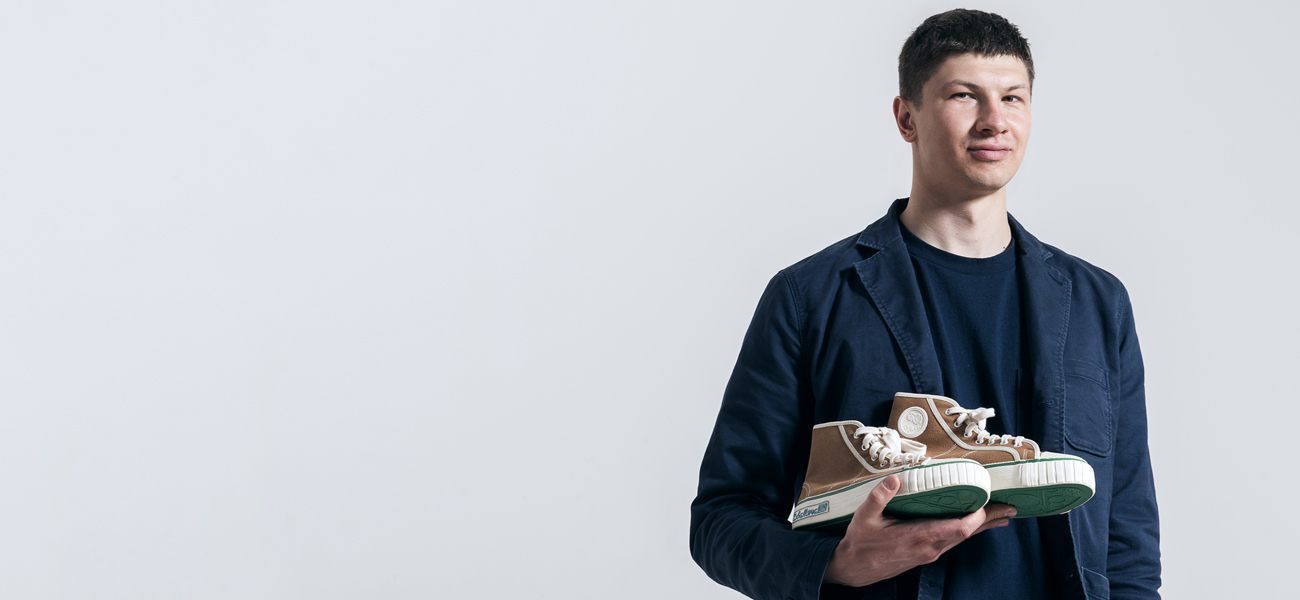
Hey. We are the company Two Balls , and we make sneakers. An exact copy of those “Two balls” from the 60-70s of the last century (ask your mom and dad). The principal difference from the original brainchild of Soviet-Chinese friendship is only in one thing: our revived sneakers are comfortable.
In the human foot, 72,000 nerve endings are 7 times more than in the tongue! We remembered this when 7 (seven!) Times reworked the model of the sole to make it perfect. We are real Kedomanyaki in the sense of attention to detail, and create cool shoes for the same as we are confused :)
At the start, 4 years ago, we had: naked enthusiasm, some investing money, a lot of problems and one employee - he is the founder companies, Yevgeny Raykov.
Today we have 15 people working, parts for our sneakers are made by 12 factories all over China, we make shoes that we are not ashamed to take to the exhibition in Germany - in terms of quality, it is now no worse (and in some ways better) than shoes big famous companies.
Only for the giants, vendor vendors are satisfied with everything, and we had to figure it all out on our own, delve into every step of the process, and personally get acquainted with every “Mr. Kwok” who leases a conveyor belt at a Chinese factory.
Today, we will reveal to the connoisseurs the entire domestic kitchen: what it is like to sew level sneakers no worse than big industry players if you are a small company. How many times we forced the Chinese to redo everything, how many times they were mistaken themselves, which is why we can reject 100% of the finished batch, and how a string for 50 kopecks differs from a string for 30 rubles.
Shoes start with pads.
Since our goal was to create sneakers a) completely authentic, b) comfortable - we went the most logical way - we developed a shoe on the models of old Balls together with the Moscow factory of orthopedic shoes.
Initially, sneakers were made specifically for the Russian market, so our block has undergone one important change compared to standard Chinese, which are used everywhere. Ours added in its entirety, so that the Russian leg, which is somewhat wider than the European, felt comfortable.
This is an important point, because Russia is very deprived in terms of comfort: our country is not a target for any major shoe manufacturer. When a person comes to the store for shoes of popular brands, in most cases he buys a pair made under the Chinese or European foot.
Many say that such shoes are narrow, but, first, there is no choice, and secondly, someone simply does not know how it should be - because there is nothing to compare. Still used to, that "new shoes need raznashivat"? Therefore, when we were just developing the idea, it was originally understood: we need to do it under our market, under the parameters of the Russian person.
In general, it is ideal to make pads with different completeness for each country, but only very large companies like New Balance can afford such luxury. And that's why.
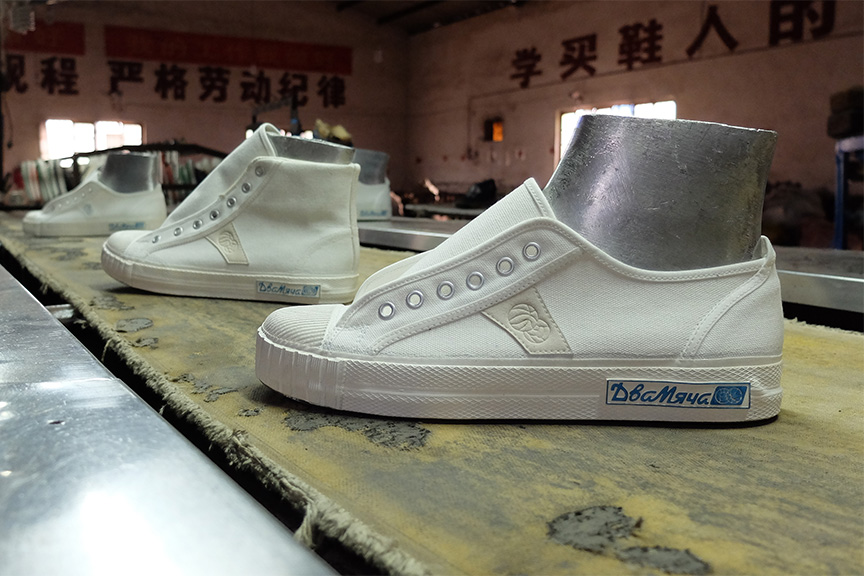
At the start, we needed 2,000 pairs of aluminum shoes, each weighing 3 kg. That is 6 tons of metal. One block cost 1,000 rubles. And now you have not even started to do anything, but have already spent 2,000,000 rubles on a snap. Pays such a block through 100 000 pairs. Therefore, such large investments are distributed to 5-6 orders and "beat off" gradually.
Well, if we wanted to make options for the completeness of the foot for each model, we would have to find at times more money for initial investments. We have chosen to take care of the beginning of Russian buyers.
Fabric upper
The material for the shoe is called "canvas" - cotton canvas with special dense weaving. This fabric breathes, but at the same time it doesn’t get wet immediately, it is easy to clean, resistant to abrasion and fading. Unless, of course, this is a good canvas.
Canvas density in “Two balls” - 16 oz / sq. yard (the density of the fabric is traditionally marked according to the English system of measures), as in the original Soviet prototype. Given that modern sneakers are made from canvas with a density of 8–12 ounces, then the “Balls” in front of them is one-and-a-half or even double safety factor.
In addition to density, when choosing we pay attention to the paint, how smoothly the color lies on the fabric and what dyes are used. A professional among the one hundred species of almost the same canvas, of the same color with identical weaving, will find the best one.
The purchased fabric in rolls enters the factory, where it is cut into parts, the edges of the parts are processed with overlock or backing, the parts are stitched together - a soft billet of a shoe is obtained without eyelets and soles.
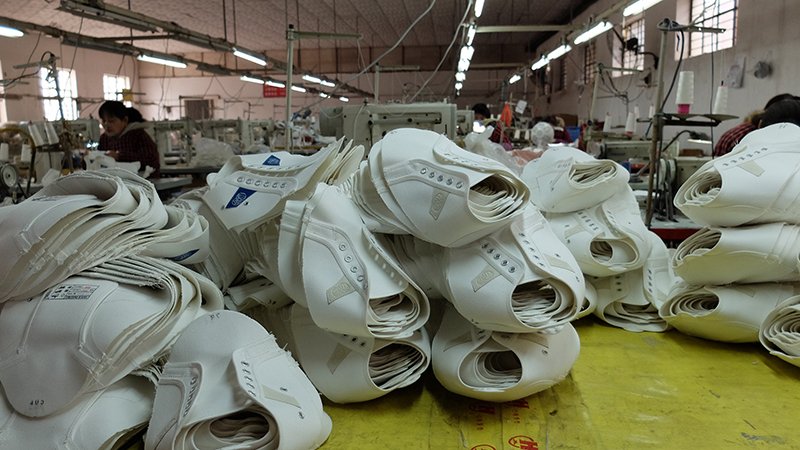
Sole
Consider the process of making this important part.
So, our shoe is ready. It's time to send it to the manufacturer of the soles, where the trace and technical parameters will be removed from it. After that, a wooden mold is made on the CNC machine - a copy of the future sole.

At this stage, you can still make changes to the final product: you can play with the form and design, change the mold in every possible way - yes, we reworked exactly this thing 7 times :)
When the design is approved, metal molds are made on a wooden sample - one for each the size. The result is a kind of waffle iron into which the raw material is loaded - rubber, and the output is sole.
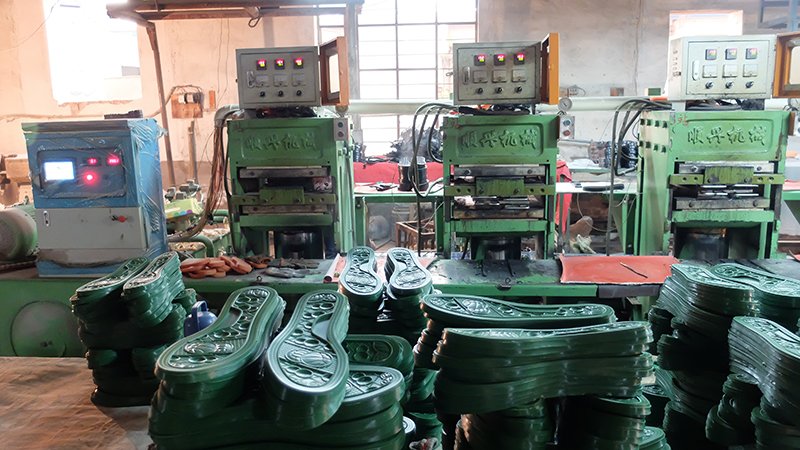
Insoles
Everything is a bit more complicated with the insole.
The process itself is in many respects similar to the production of the sole: we also use mold, although it is of a simplified form, but it is also made to order, according to the imprint of each individual pad. Further, the manufacture of molds, casting blanks - we have for the insoles using a lightweight durable elastic polymer EVA (ethylene vinyl acetate). They put a canvas on the blanks of the insoles, put a logo and size on top of it, cut out clear edges.
Difficulties arise because of the material EVA - it is not easy for him to take the form of an insole with orthopedic support. In the old Balls used foam rubber, which is easy to take shape. But for 2019, this is a long time “retro” material, heavy and not very well absorbed.
EVA, on the other hand, requires special molds and is much less resistant to processing. Because of this, the reject rate specifically for insoles is about 1% (for other companies that make insoles at the same factory, the reject rate is about 0.5%). Orthopedic foot support is a very important part for your health if you walk in flat shoes, so we are ready to pay this price.
Laces and tips
Sometimes little things are not so unimportant. For example, you can take the usual laces for 50 kopecks - consumer goods, which are sold in billions. Or order your own lace with the desired shade on the Pantone, with a given weave and material, as we did. It will cost rubles at 30. The difference is quite palpable. Let's add here aluminum tips with an individual engraving of 5 rubles each, and the gap will widen by another several hundred percent. Uniqueness requires financial sacrifice.
Of course, you can do everything much easier and cheaper. And it may be buying. Many do so. Even large market players often rely on the unification and maximum variety of the range: every season they release a lot of new models, without paying special attention to details and their thoughtful study - after all, soon the new season and buyers will switch to the next batch of "new".
How is quality checked?
We use a quality assurance method called quality assurance. These are checks that are not carried out by the finished product, but by each element individually, prior to assembly. First, everything that arrived at the final factory is checked before the assembly line. Secondly, in case of the slightest suspicion of a violation of technology, an additional check is initiated. For example, a controller comes to the plantar factory, checks the quality of the mixture, the rigidity of the finished sole, the compliance with the performance characteristics - there are special devices for this. If we are talking about color - compare with the reference sample.
The familiar quality control, quality control, is done after assembly: we take several finished product units from the lot and inspect them visually, weigh, check for the requirements of physical and chemical safety. If everything is in order, we pack and ship. If not, check the entire batch in more detail, find out the percentage of defects.
On average, we have about 5% rejected in the final assembly. This is a high percentage, but this is the price of a well-made product. In principle, many manufacturers would not pay attention to some little things, our Chinese do not get tired to argue with us about this. But when you have a shop in GUM opposite Louis Vuitton - well, you can’t allow a curved stitch anywhere. Yes, we are harmful corrosive customers :)
In general, the Chinese have such a policy: if you can put your foot in a shoe, this is not a marriage. On the quality of need to insist. Especially if there are claims to world-class sneakers. There were cases when we refused the whole party because of a problem in one element - 100% of marriage.
We do not bear direct losses from this - the contract is concluded for a certain number of finished products that fully comply with the TK. But, knowing this feature of ours, discard more than other customers, the Chinese, and put the price of production for us higher.
How many shoe factories do you need?
The factory is the essence of the assembly line on which the final assembly takes place. If your goal is a unique product, then one factory will not do, you will have to look for manufacturers for each individual component. Need some special outsole? So you need to look for professionals in the manufacture of soles. For laces - your supplier, for eyelets - yours. And so with all the "parts".
We work with 12 companies that supply shoe parts to an assembly factory. All of them are scattered across China at a rather impressive distance from each other, because not all suppliers could work according to our technical task and give us the quality we needed. And it is for us in priority.
To get products that meet the quality standards of the USSR, the founder lived in China for 2 years, traveled around all these industries. During this time, he managed to penetrate deeper into the Chinese mentality, understand the many nuances of the shoe business, and personally meet many of the owners of these factories.
Major players, of course, do not work that way. The conditional “Nike” simply appeals to a shoe agency and asks to make a product according to its TK. All the running around, research, acquaintance with "Mr. Vusyaoshonom" and other things do not concern him. It does not hurt his head from the question "How to make the right sole."
Final build
Components coming from other factories are inspected for defects and refinement. Eyelets are attached to the fabric parts. Laces reunited with tips. Later on, the conveyor receives the parts of the shoe, which must be joined as a constructor. 40 people sit along the conveyor belt and stretch the top onto the pads, attach logos, attach soles, and perform stitching. All this is done manually.
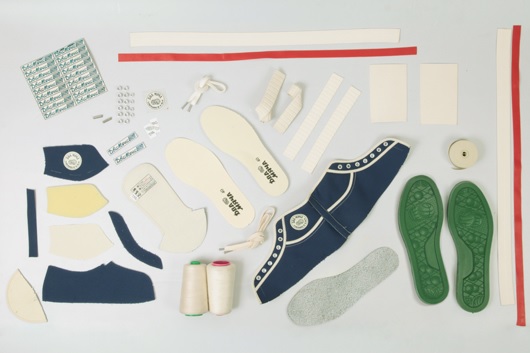
At the end of the ribbon, the sneakers enter the vulcanization pot, in which the sole and the top are glued together. When everything is assembled and glued together, the sneakers get on the packaging conveyor, where they take another 8-10 steps, and ultimately get into the box.
The timing is as follows: from the time of the order to the complete readiness of the party, it takes an average of six months. That is, if you sew for the summer, then you need to order in the fall and winter.
About high standards and small bumps
The main thing for manufacturers of footwear for the USA and Europe is the appearance and high standards of physical and chemical. In Russian, you cannot use a phenol-based adhesive that is hazardous to health or pour toxic soles. Looking for hypoallergenic materials that do not smell chemistry and do not emit toxic substances. Otherwise, you simply will not be allowed on the market. Russian laws on this part are much calmer.
As for the external component, the price of materials plays a big role here, since cheap rarely looks good. There are hundreds of types of canvas, rubber, aluminum alloys, and so on. We initially chose the highest quality and expensive materials from all that fit into the cost price. It was important for us to show in practice that the Russian product can be of excellent quality.
In addition, when we are directly in China, and we see how global brands work - we understand that our system is competitive, that this is how all large companies work, we have correctly configured all processes and standards. We invested a lot of time and resources in the development and collection of information at the very start, so we had a product of the European level, but for the Russian market.
We were convinced of this when we exhibited in Berlin with other well-known shoe companies. It turned out that we are even cooler in some parameters (the same quality of materials): Western manufacturers prefer to build a little less good for the consumer and a little more profit for the same price. As they say, just business.
With marriage, everything is ambiguous. We use manual labor, so everything is not done according to the standard with laser precision. We perceive some diversity in the decor elements from instance to instance as a sign of exclusivity. This is a conscious step, and this is just not a marriage for us, is, on the contrary, something unique in each pair, manual work ... But the wrong geometry of the shoe, too rigid an insole or a sole that has fallen off after the first season is definitely a marriage, The sale does not fall.
Why is the production in China?
China is not popular with manufacturers at the expense of cheap labor, which is not cheap at all - the salary of Chinese seamstresses is about $ 1,000. In the same Russian labor is now much cheaper.
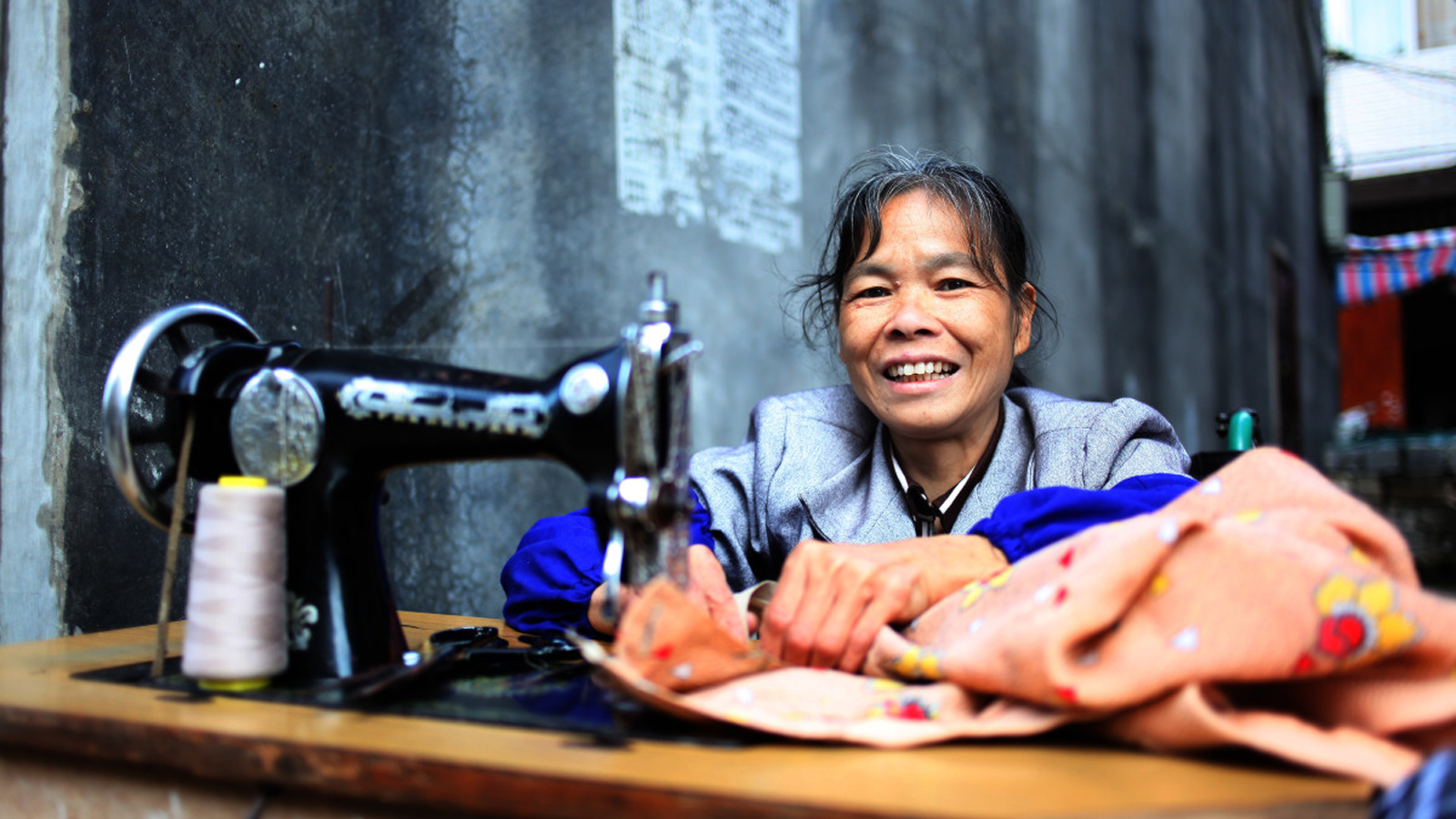
China has an advantage in thoughtful, inexpensive and in many ways unique logistics. And in an even more unique infrastructure. China has it all: experts, materials, technology. The manufacturer does not need to import something into the country for production. Transport is fast, convenient and cheap, the cost of transportation for business is minimal.
Plus - China's infrastructure allows business to be fast. And speed is important. In the morning, you can draw any idea literally on a napkin, and in the evening to get its realization: it doesn't matter what it will be, the gadget or the sneakers. It is convenient and saves money.
Production in, for example, Vietnam is quite profitable if you look only at cheap labor, but do not take into account the delivery of materials, equipment and the search for specialists.
Where does the shoe business go?
Our opinion: sooner or later, shoes will be massively printed on 3-D printers. We chose the model on the site, downloaded the layout, took it to print - that's it. Already, New Balance prints about 100,000 of these sneakers per year. The price for them is quite high - about 400 dollars. But do not forget: new technologies are always expensive at the start.

Conclusion
Here is some production information that we have mastered during our 5 years of adventure in China. It turned out with us or not - to judge customers. In any case, as we see it, we managed to make an authentic product that carries a certain cultural code, and for the quality and design of which we don’t have to blush.
If we develop the theme of Soviet brands with an “idea”, then in the USSR there was a fairly strong school of industrial design, which originated in the All-Russian Scientific Research Institute of Technical Aesthetics. We can recall the bags of interesting weaving, faceted glasses with cupholders, various electronics and photographic equipment - as regards the design, much was asserted at this institute.
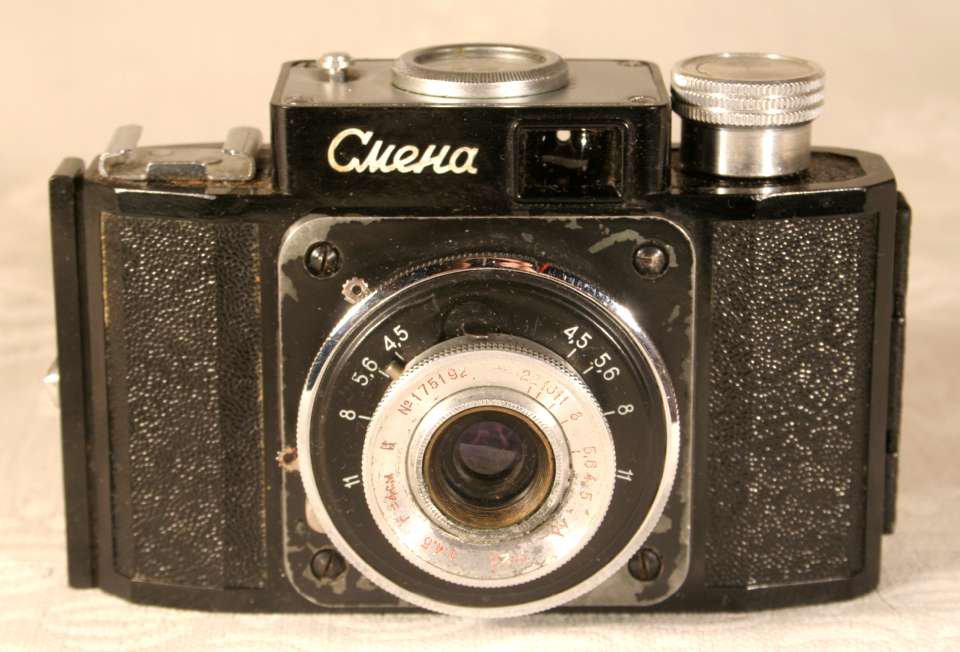
You can also recall our food industry: Stolichnaya vodka, Vremya cookies and others. Many of these brands are 100 years old, and they feel great in the world market, and, at the same time, bear their names, as before - in Cyrillic.
Write your ideas on the revival of Soviet brands in the comments and go to our store . See you soon.
